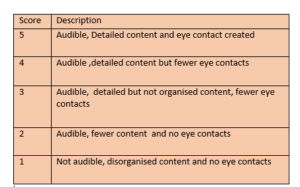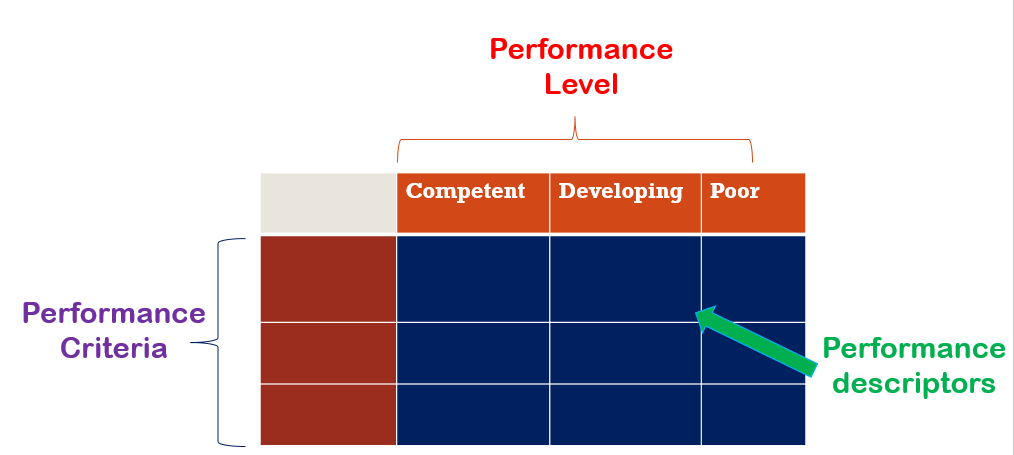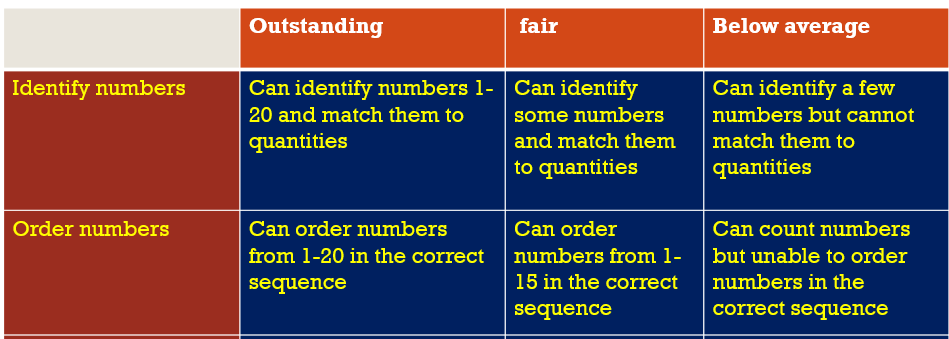When it comes to grading project-based assessments, rubrics are matchless. A rubric guarantees fairness in assessments, and also provide learners an opportunity to work with an expectation in mind.
There are two basic types of rubrics: Holistic and Analytic rubric.
Holistic rubric is a one-dimensional rubric that focuses on the performance criteria with a score assigned to each criterion.
For example:

Meanwhile, an analytic rubric is a a two-dimensional rubric that breaks down the performance criteria (skills) into different levels of performance. It is the most widely used rubric in most school systems. It can be divided into three parts:
- Performce criteria (PC)
- Performance level (PL)
- Performance descriptors(PD)
The acronym PCLD can help you remember faster.

Steps to building a rubric
Let’s get started!
1. Define your goal
What knowledge or skill do you want your learners to acquire at the end of the project? For example: By the end of this project, learners should be able to count from 1-20.
2. Decide on the project-based activity to evaluate the learners.
You may choose from the list below.
Oral Presentation
Create a video
Make a Product
Design a model
Create a Poster
Demonstrating a variety of skills
Submit a write-up/essay, report, survey, research, etc.
3. Set the performance criteria
Once you have your overall objective in mind, break it down into different learning outcomes. This should include all the skills and knowledge you would want your learners to acquire. Make a list of skills or knowledge required to achieve your desired goal, group and label them.
For example:
Overall goal: Learners should be able to count from 1-20
Learning outcomes/ Skills
- Order number in the correct sequence
- Identify numbers
- Relate numbers to quantities
- Skip count
4. Decide on the performance level to use
You could decide to list the level of performance moving from a low level of achievment to a higher level of achievement, or do it otherwise. Some examples to describe perfromance levels include:
Master Apprentice Beginner
Emerging developing proficient
Proficient Competent Developing
Needs improvement Developing Average Above average
Above expectation Meets expectation Approaching expectation Below expectation
Exemplary, Accomplished, Developing , Beginning, Underdeveloped
5. Insert the PC, PL and PD into your table
Using MS Word or Google Docs, create a table with columns and rows corresponding to the number of performance levels and criteria respectively.

Use specific and measurable words to fill in the performance levels based on the outlined performance criteria. For example:

Conclusion
It doesn’t take much time to make your own rubric. Although you can use an online template to build one, it’s better to generate your own rubric so as to asses the specific skills you want your learners to develop.
Start creating your own rubrics to assess learners.
